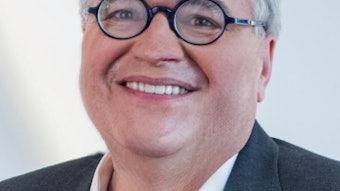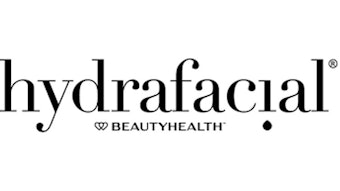Today’s spa consumer is pretty savvy, and that is both a challenge and an opportunity for spa product manufacturers. According to Melinda Taschetta-Millane, editor of Skin Inc. magazine, a business publication for spa industry professionals, spa customers are well-educated and know the benefits of total body wellness. What’s more, they are buying into the spa experience. The 2004 International Spa Association (ISPA) report touched on consumer behavior and found that people wanted “pampering” to stay healthy and look good, and that they generally were knowledgeable and demanding about spa services. Today, however, new findings conclude that there is a shift in attitude. Taschetta-Millane said the emphasis now is on self-preservation and spas have gained a new aura of respectability. People want to reward themselves for working so hard. De-stressing and decompressing are cited by ISPA as the top two reasons for “being touched and pampered.”
According to the ISPA study, the top 10 product types in spa retailing include skin and body care products, products and treatments for men, and demand for quality products/specific ingredients. The contract manufacturers GCI magazine talked with tell stories that underscore the findings. These days, many contract manufacturers offer or are asked to produce products for spa and home-spa use.
Pamela Jo Busiek, CEO and president of CBI laboratories, Inc., said the company currently manufactures more than 30 different private label spa body formulations for both retail and in-spa professional treatments. Core retail products feature spa bath and shower basics and also a line of aromatherapeutic spa body products with relaxing and invigorating benefits. “In the past several years, we have added some successful retail products—ranging from our top selling SugarButter™ Body Scrub and Sugar Smoothie Body Crème as well as our Sugar Plum Spice Spa Body Trio, which includes a single-phase sugar scrub, shower wash and body butter,” Busiek said.
According to Melanie Dean-Valdez, CBI’s director of marketing and product training, the company expanded its professional spa body treatment offering with the launch of Shio Doro™ Detoxifying Scrub and Cellufirm Contouring Serum, designed to be used as an in-spa detoxifying service for cellulite. Shio Doro, Japanese for “salt mud,” is a fusion of unique body-firming ingredients from around the world. Natural sea salt from Okinawa, with its high mineral content, combines with organic colloidal fresh water silts from the Baltic lakes to improve skin smoothness, texture and tone. “We also added an intricate mix of trace mineral elements along with Arctic peat, wasabi and Japanese mushroom extracts to assist in removing debris and impurities while toning the skin,” said Dean-Valdez.
McKenna Labs also manufactures spa products, according to Sheryl Singer, national sales and marketing manager. The company does not produce its own brands so as not to compete with its customers’ lines. “As contract manufacturers, (we let) our customers choose the products in their lines and we manufacture/fill/label/ship for them,” Singer said.
Growth Progression
Sun Deep Cosmetics sees a very different picture than it did 10 or even five years ago, considering the spa industry’s rapid growth over the past few years. According to Sundeep Gill, a pharmacist and Sun Deep Cosmetic’s vice president of research and development, spas were still coming into their own 10 years ago, and were ordering just the basics such as lotions and moisturizers. That started to change five years ago, and the company recognized a trend forming. “Spas were trying to balance cosmetics with technology, which helps create noticeable changes,” said Gill. “At the time, technology had yet to catch up to imagination.” Now, he said, his company offers a virtual arsenal of novel, innovative products that deliver noticeable effects for users on many different levels. The company’s broad product mix includes enzyme exfoliation masks, calming masks, sugar/salt scrubs, blending bases, moisture masks, collagen creams, eye circle gels and much more.
Busiek has watched much the same progression. Ten years ago, CBI was manufacturing basic bath and body formulations with natural plant oils and vegetable-based emollients. Over the years, the company has expanded into more aromatherapeutic-based products, as well as body exfoliation products using natural oils and scrubbing agents such as turbinado sugar and Dead Sea salts.
At McKenna Labs, the ingredients used to formulate products comprise the one major difference found in product production today. Another change is the addition of more cosmetic body products to accompany the skin care products they produce. Body products include sugar and salt scrubs, hand and body lotions, and fragrances. Men’s and teen spa lines are another new product mix, said Singer, giving weight to the findings in the ISPA report.
Where do the ideas for all the new products originate? As in many industries today, contract manufacturers in the cosmetic industry are staying ahead of their competition by developing new products and concepts that they can push out to the marketplace. So, what do you do when novel technologies cross your path? Gill turns them into products to intrigue his customers. “As a licensed and practicing pharmacist, I receive an in-the-trenches view of what people are expecting out of the cosmetic industry through the questions I am asked. This gives Sun Deep Cosmetics a needed edge to tackle an ever-changing market,” said Gill.
While CBI relies on customer requests and suggestions for new product ideas, it, too, finds inspiration in new technologies. The majority of its spa body product innovations come from sourcing novel ingredients from various countries around the world.
Ingredient Mix
Spas worldwide are inspired by their indigenous ingredients and local cultures, evident in each spa’s own retail line and treatments. Branding and retailing within the spa industry, particularly among resort and hotel spas, continues to be a key trend in the industry and is expected to continue for some time.
This spring, CBI launched its newest retail spa body product line: The Bora-Bora Beach Spa Body Collection, inspired by the beautiful beaches in Bora Bora, features a blend of moisturizing tropical oils combined with white sand exclusively from Bora-Bora and Tahitian coconut shell powder. Extracts of hibiscus, orchid and tiare flower blended with nuances of Tahitian vanilla and island coconut milk to create a tropical spa escape for the senses. Products range from Bora-Bora Beach Body Scrub, Bora-Bora Beach Moisture Gel and Bora-Bora Beach Shimmer Glow.
For McKenna Labs, there are big differences in the ingredients customers are looking for. Five to 10 years ago, AHA’s were the most requested ingredients, whereas today customers are clamoring for peptides, copper and skin hydrators such as Aquaxyl, offered by Seppic. Natural and organic ingredients are being requested more frequently, as are products for men and products marketed to teens.
“The ingredients we used five years ago were more mainstream than the ingredients used today,” said Gill. “With the advent of new, more natural chemical processes and innovative botanicals, we are able to create products that can actually effect long-lasting skin changes.” Changes in the market are the result of pressures from consumers coupled with the driving force of the industry to make ordinary products more effective.
Staying Fresh
Making products that do what they say they’ll do is an ongoing challenge for marketers. The constant consumer desire for newness is another faced by all industry marketers and manufacturers. And, according to Gill, spa product developers are not exempt. “The never-ending challenge of spa marketers is to keep their ideas fresh,” he said. “Trying to market yesterday’s news will rarely work despite any price structure. In order to be successful, marketers must keep their products on the forefront of innovation.”
As GCI reported in “September 2005 Worldwide Wellness Boosts Spa Biz” by Elyse Glickman, the $11.2 billion-plus spa industry is targeting both high-end and mainstream clients in an increasingly sophisticated spa market that is propelled by the growing wellness trend.
The growth of spa facilities and increased awareness has led to spa-inspired beauty products lining the shelves of everything from high-end beauty supply stores to department store cosmetic sections to the corner pharmacy. In fact, 2005 spa retail figures are expected to register at $701 million.
Our manufacturers are optimistic about the future of spa products. “Spa care looks bright, not only in the United States, but worldwide,” said Gill. We are seeing a tremendous growth in the market.
McKenna’s Singer agrees. “The spa products market has expanded enormously with larger spas adding more body products, at-home spa services, and more men and teens going to spas—as well as people wanting to take better care of their skin and themselves and having the knowledge at their fingertips.” In Singer’s view, the spa products market, like all skin and body care products, is always expanding with changing product knowledge, research and new technologies in raw materials. “The future is limitless.”










